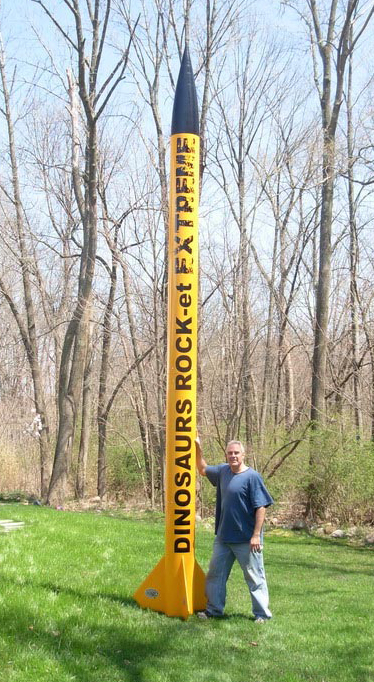Featured Flight Guidelines/Application
 What is a Featured Flight?
What is a Featured Flight?
A Featured Flight flies on L – N motors and are usually very heavy. They carry multiple electronic devices to control parachute deployment. The NWM is a huge flat range, we fly in the center of a square mile of mowed grass that is surrounded by miles more of open, flat farmland. It’s huge, but it is not the desert, we have neighbors, we need to keep our host and our neighbors happy. We need to review what you are bringing if you are planning to fly a Big Rocket.
Do I have to register?
Yes, if you plan to fly a rocket with an L or larger. NARAM is a big event and we need to have a good idea what to expect to support them and you! If you show up with a rocket that you have not pre-registered, your flight will be allowed only at the discretion of the Big Rocket Manager.
General Guidelines
The form allows for uploading a RockSim or other simulation file. Please provide this as it helps the Big Rocket team understand your rocket. Big Rocket flights present greater recovery challenges than other flights, make a plan for recovery before your rocket is on the pad. Look at the aerial photo of the field and know where you are. Take a phone, take water, a vehicle if necessary to retrieve the rocket. If the flight crosses the river you MUST talk to MARS officers. Ask for advice if you don’t know the layout of the farm roads.
Local Rules
Due to the geographic proximities of not only the National Warplane Museum with its vintage aircraft, but also the college campus of Geneseo and the prison, we have certain unique limitations that other fields don’t have.
Previously no composite HP clustering/staging was allowed.
In order to allow a progression of both knowledge and psychomotor skills, the board of directors has decided to allow restricted composite HP clustering and staging to determine if this can be safely done within the limitations we have at this site.
All fliers wishing to fly either composite HP clustered or staged rockets must complete our BFR form, and submit it prior to the launch along with a Rocksim or Open Rocket simulation for the Geneseo site to our BFR committee. After committee review the flier will be notified if approved/rejected.
If you show up with a rocket that you have not pre-registered, your flight will be allowed only at the discretion and approval of both the BFR Manager and the RSO.
All composite HP clustered and staged flights will be limited to a maximum altitude of 9,000 ft AGL. All must be flown off a rail.
Note: BP clustered/staged rockets are exempt from these requirements unless their combined propellant falls in the HP range.
Specific requirements for composite clusters:
- All must use commercially made E-matches as the primary ignition source for each motor, and include details about any secondary pyrogens used.
- E-matches to be used in a harness are to be individually measured for resistance. E-matches should match within 10%. Others outside of that range are not to be used for the intended flight.
- E-matches must be wired in parallel.
- The rocket must be capable of a maximum of a 5-1 thrust to weight ratio with all engines ignited, a 4-1 ratio with one engine failing to ignite, and a 3-1 ratio in the event 2 engines fail to ignite
- You may not use a configuration that includes a central motor larger than 2 designations compared to surrounding motors, i.e. a central J with surrounding H’s is fine, but a central K with surrounding H’s is not.
- All composite clusters must be flown from a rail even the newer Quest/Aerotech A-E motors.
Specific requirements for composite multi staging:
- Must use electronics that are capable of detecting, and set to prevent staging beyond 10 degrees vertical.
- Timers will not be allowed.
- Maiden flights will not be allowed. The flier must have at least previously flown the sustainer and attached booster in a one stage configuration successfully.